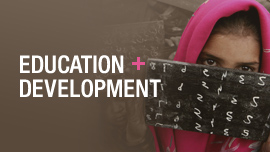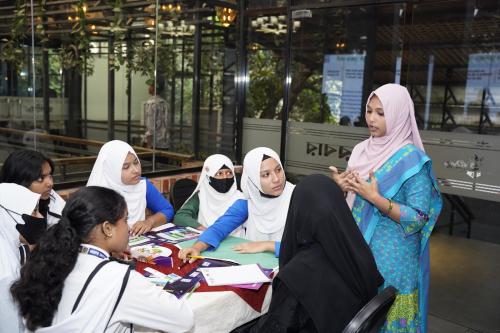In Latin America, education is facing multiple challenges. Tremendous numbers of students are not finishing school—according to the Inter-American Development Bank, barely 40 percent graduate from the secondary level across the region. Perhaps even worse, those that are completing school are not getting a quality education that prepares them for fulfilling and prosperous lives. International comparisons, such as the OECD’s highly respected PISA evaluations, are only one data point among many that show Latin America at the bottom of the education barrel.
Given this reality, it is clear that we can’t maintain the status quo in Latin America and expect better results. Instead, we need education innovation in the classroom and in the way that every important stakeholder takes part in reform. This means promoting the involvement of new players, be they parents, private sector entrepreneurs, or other actors in the NGO or non-profit worlds.
How do we get started on such a massive endeavor? This question was the theme of a meeting held last week by the Brookings Institution’s Center for Universal Education. Participants included a number of influential opinion makers, creative thinkers and private sector innovators who are currently working on broadening the education reform process in Latin America.
The discussion featured a free-flowing exchange of ideas and comparison of experiences. In particular, it focused on technology and the ways in which technology has affected teacher training, as well as how it could be utilized to further improve results in the future. At the center of the technology discussion was Eugenio Severin, a Chilean entrepreneur who shared his experience from the perspective of the private sector.
Severin is the CEO of Docente al Dia, a collaborative online platform for teachers. The platform aims to support their ongoing training and professional development. It provides content and courses, but also an interactive social networking community for teachers.
Docente al Dia works with local partners across the region to implement programming for teachers in response to recognized policy challenges. As such, Severin offered critical insight into actual, on-the-ground implementation of these ideas. His presentation centered on what he has identified as the six practice areas of the “new paradigm” in education: a renewed focus on learning; educational personalization; data-driven teaching; openness to new learning experiences; collaborative knowledge creation; and extended time and space for learning.
The common thread running through these six practice areas is the need to bring students themselves back to the center of the education debate. Thus, technology and its capabilities are not important as ends in themselves, or simply because they represent the newest shiny toys, but because of the possibilities they open up to better meet the needs of students. As Severin argues, many of the best learning mechanisms and most promising educational opportunities for students are not only aided by new technologies, but increasingly rely on them.
This assertion holds true especially for low-income communities and socially marginalized students, whose classrooms may see the most benefit from the cost savings and quality improvements that well-applied technologies can deliver. Technology can assist schools in delivering the kind of personalization and adaptive learning that could help kids at all levels achieve their best and stoke their enthusiasm for learning.
Teachers benefit from these advantages as well, and this is the logic behind Severin’s platform. However, this is still not well understood in Latin America, where the same rubric of professional development is applied to all teachers, no matter what their situation or aptitude. As with students, we need to inject personalization into teacher training. Furthermore, teacher development (along with student development) needs to extend longer throughout the year, rather than be packed into several quickly forgotten days, as it is now.
We are now realizing that students must be lifelong learners in order to thrive in the global knowledge-based economy; the same should go for teachers, which is precisely where technology and the solution-focused private sector can help deliver results.
In this sense, while participants at the Brookings event brought different perspectives to the table, perhaps the most interesting aspect of the discussion was the total agreement regarding the importance of tapping into these sources of innovation. This doesn’t just mean “cool gadgets”, in the words of a representative from the Omidyar Network. Rather, Omidyar’s experience shows that effective innovation usually touches on more fundamental aspects of education, such as the distribution networks that deliver products and services to governments and schools.
Projects like Severin’s teacher training network are only the beginning. Latin America needs a wave of innovation in the education sector, through all areas of the system. It needs entrepreneurs like Severin and others to try new ideas, take risks and forge new paths. If we have learned anything, it’s that governments fail at this sort of risk-taking innovation. However, governments still have an important role to play in the process by first creating an enabling environment and then scaling programs up at regional and national levels for the benefit of all students.
Leveraging this sort of private-public partnership can reap huge benefits. As a recent Brookings paper argues: “Where a business case can be made to investors, it is perfectly possible to channel significant private sector resources to help solve public problems…The future prosperity of our global economy depends on our ability to recognize our shared responsibility in providing quality education and act with new energy to invest in its provision in emerging market economies and the developing world.”
The Brookings Institution is committed to quality, independence, and impact.
We are supported by a diverse array of funders. In line with our values and policies, each Brookings publication represents the sole views of its author(s).




Commentary
Reshaping Education in Latin America through Innovation
September 27, 2013